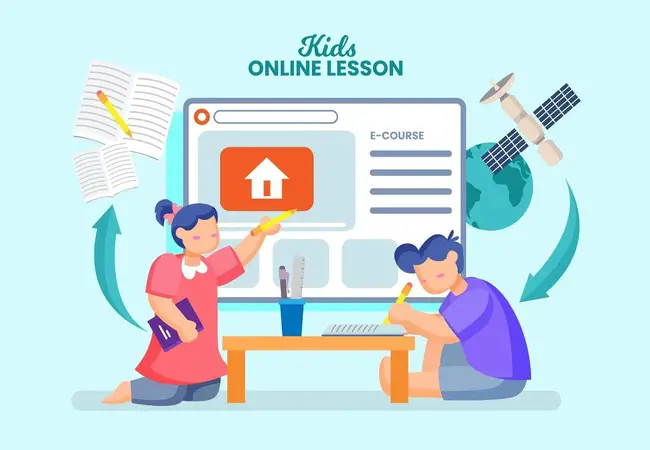How Did Online Education Come Into Existence?

E-learning is the evolutionary way of the process of learning and teaching. Some see it as the progression from computer-based training programs, but it is the very large online degree programs of today that have transformed the way these courses can be delivered and accessed.
This paper deals with the major milestones in the history of online education, how it grew, and finally took shape into a full-fledged mode of teaching and learning used by millions around the world.
The Rise of Computer-Based Training
While the roots of distance education are first traced with mail correspondence courses, what is today recognized as online education has its roots in the utilization of computer-based training (CBT) programs that emerged in the 1950s and 1960s.
These were basic training programs delivered on a computer with minimal graphics and basic interactivity. Much of the early development happened at large universities with the financial means to conduct research into new teaching methods involving computers.
As more affordable personal computers emerged in the 1970s and 1980s, the concept of delivering education using computers and software programs gained more steam and adoption. Big technology companies like IBM began offering CBT courses for internal employee training as well as selling packaged CBT courses to client organizations.
These early CBT programs laid the foundation for more advanced and interactive e-learning that was soon to come.
The Internet Drives New Possibilities
This makes the 1990s a turning point in the provision of education over the Internet as the public started gaining wider access. Instructors could now teach outside the confinements of the closed intranet systems of the companies and universities to teach the world over the World Wide Web.
Some key developments during this period include:
Web-based training courses offered by private companies like SmartForce/Skillsoft for professional development in business, IT and desktop skills. This allowed organizations to train employees with tailored online content.
Universities partnering with technology providers to create platforms to deliver their academic content and degree programs fully online. For example, UK’s Open University launched their online platform in 1998.
Governments recognizing online education – the Western Governors University in the US incorporated fully online bachelor’s and master’s programs in the late 1990s.
This developed in the late 1990s with the speed of bandwidth increasing and further multimedia content, discussion forums, as well as basic learning management system features, used to enable better online interaction.
The 2000s: Growth & Innovation
This was one of the big leaps and innovations that history will record for the online education space of the 2000s. And there were several trends this decade brought to the fore:
After that, Massive Open Online Courses (MOOCs) exploded in popularity since most Ivy League universities, e.g., Stanford and MIT, openly offered free courses, hence attracting millions of learners on MOOC platforms like Coursera and Udacity.
Companies realized the skills gaps inside their workforce and started partnering with new online education providers like Udemy and LinkedIn Learning to re-skill their employees with programs of micro-learning.
Below the level of higher education, schools and districts implemented online learning platforms so that students had the choice of taking the courses they preferred and offering remote education and low-cost credit recovery programs when needed.
Higher education institutes offered more hybrid or blended programs to give students flexibility to take some courses online and others in classroom.
The technology behind online education improved vastly – faster bandwidth, Learning Management Systems incorporating advanced multimedia, discussion forums, assignments, plagiarism checker and gradebooks features for easy course administration.
Present & Future of Online Education
Today online education has become mainstream and widely accepted around the world. Here are some key stats about its immense growth:
According to Global Market Insights, the e-learning market was valued at over $250 billion and is set to exceed more than a 13% CAGR growth from 2021 up to 2026.
Pearson data showed that participation from learners over 110 million was realized only in the United States in 2021 in online education courses.
77% of academic leaders rated their schools’ online education efforts as excellent or above average as per Quality Matters – a significant increase vs previous years.
This burgeoning sector has also given rise to more specialized roles – instructional designers, online educators, education technology providers and online school management software to better deliver digital education.
Future outlook remains very promising as technology continues to evolve with artificial intelligence, AR/VR and adaptive learning enhancing how we teach and learn online. Online credentials and skills-based certifications are also rising in popularity and employer acceptance.
The acceptance from learners and educators has now firmly established online education as a viable, effective mode for education. For the digital native generations, this represents that default mode for learning.
In summary, online education has come a long way from its origins over 50 years back to offer engaging, high-quality learning opportunities at scale to learners all over the globe. Some key questions readers may ask include:
What major benefits drive adoption of online education?
Flexibility, cost savings, options for self-paced and remote learning not limited by geography are some major advantages.
What are some best practices for succeeding in online education?
Self-motivation, time management, collaboration with peers and instructors, utilizing available technology tools are critical for online learner success.
How do I choose online programs wisely?
Look at instructor quality, university rankings/accreditation, flexibility of online platform used and career prospects post-learning.
By bringing education into the digital world, online learning has transformed possibilities for learners of all ages and backgrounds. Though still an evolving space, its immense potential to change lives through skills and knowledge transfer continues to be realized.



